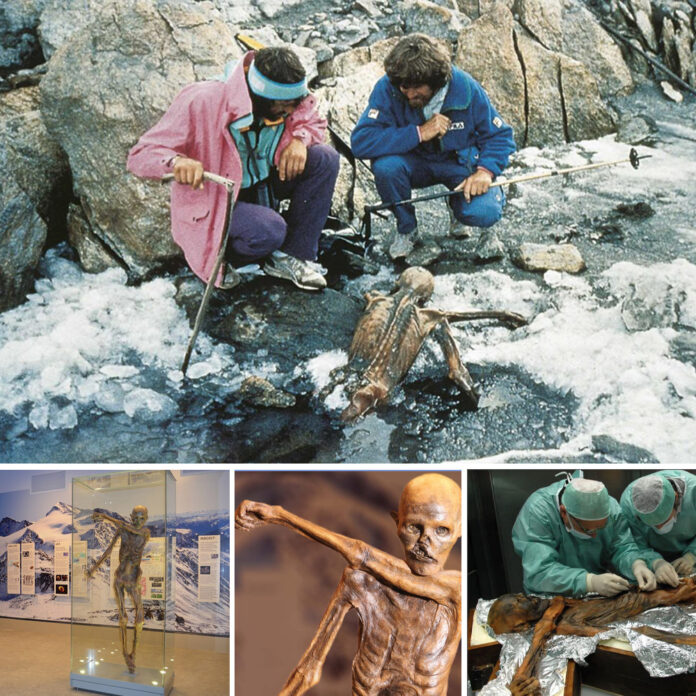1. Ötzi’s Ownership Has Been a Point of Contention
Discovered in the Alps near the Austria-Italy border, Ötzi’s resting place became a complex ownership issue due to a glacier shrinking after the 1919 border establishment. Initially studied at the University of Innsbruck in Austria, Ötzi has been displayed and researched at the South Tyrol Museum of Archaeology in Bolzano, Italy, since 1998.

2. A Stone Tablet Might Document Ötzi’s Death
Near the Ötztal Alps, where Ötzi was found, a stone slab was discovered with engravings. One depicts a person shooting an arrow into the back of an unarmed man, mirroring how scientists believe Ötzi died. However, this interpretation remains controversial among researchers.
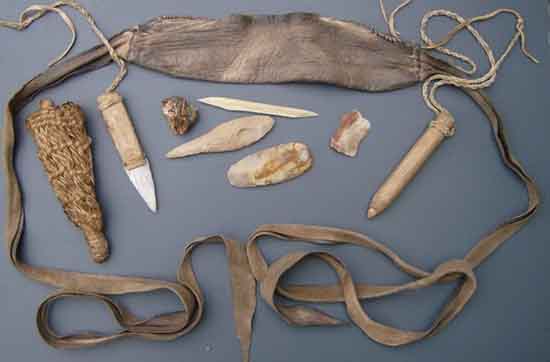
3. Ötzi Suffered from Digestive Issues
Scientists found whipworm parasite eggs in Ötzi’s intestines, suggesting he endured nausea, vomiting, and diarrhea. Additionally, he had H. pylori bacteria, which causes gastric ulcers. Evidence shows he consumed hop hornbeam, possibly for digestive aid, and a fingernail with Beau’s lines indicated multiple illnesses in the four months before his death.
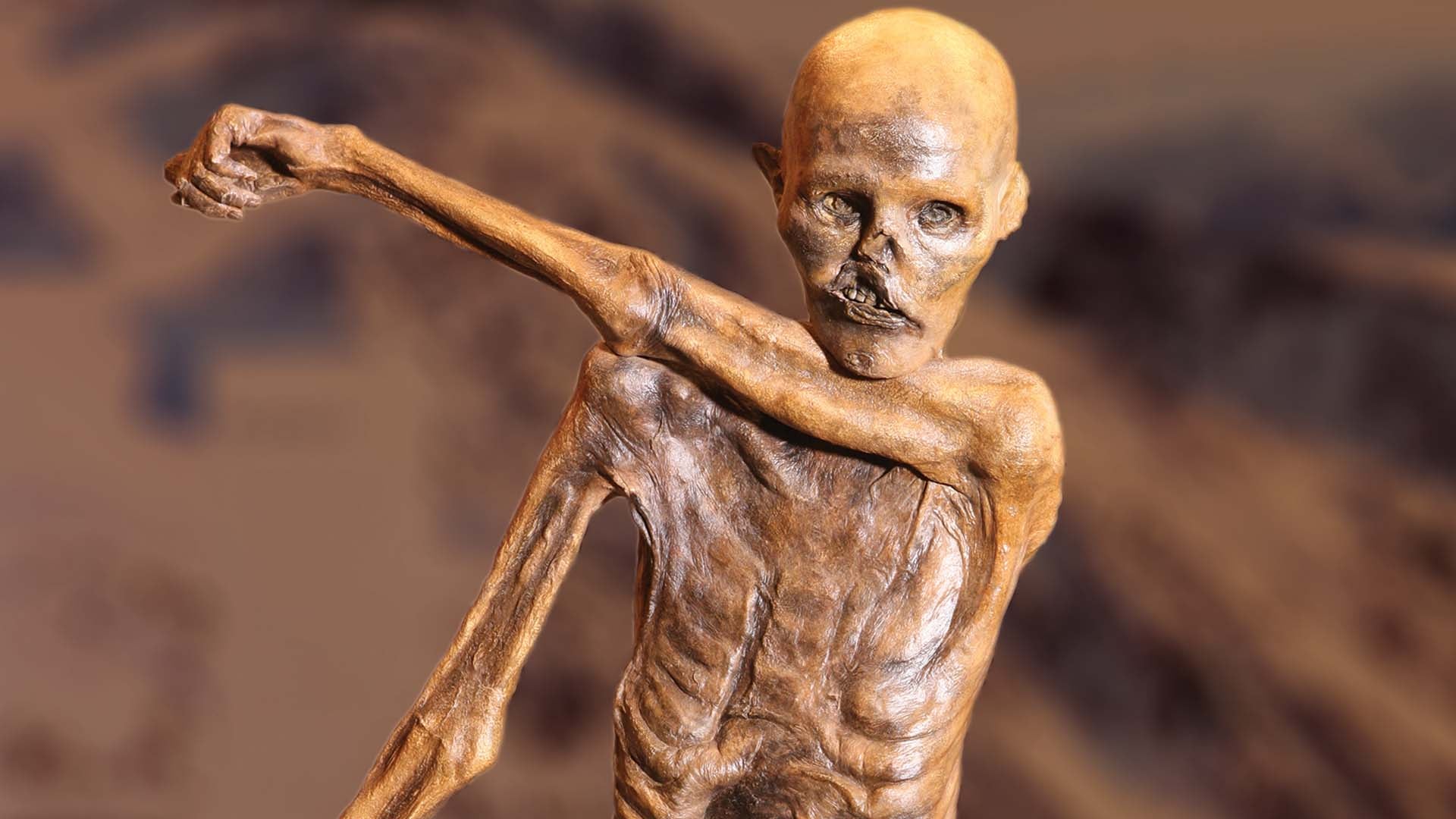
4. Ötzi Carried a First Aid Kit
Ötzi had two pieces of fungus, identified as Piptoporus betulinus, on a leather string. This mushroom causes diarrhea and offers antibacterial protection, indicating Ötzi might have used it to treat whipworm. These mushrooms were used medicinally until the 20th century.
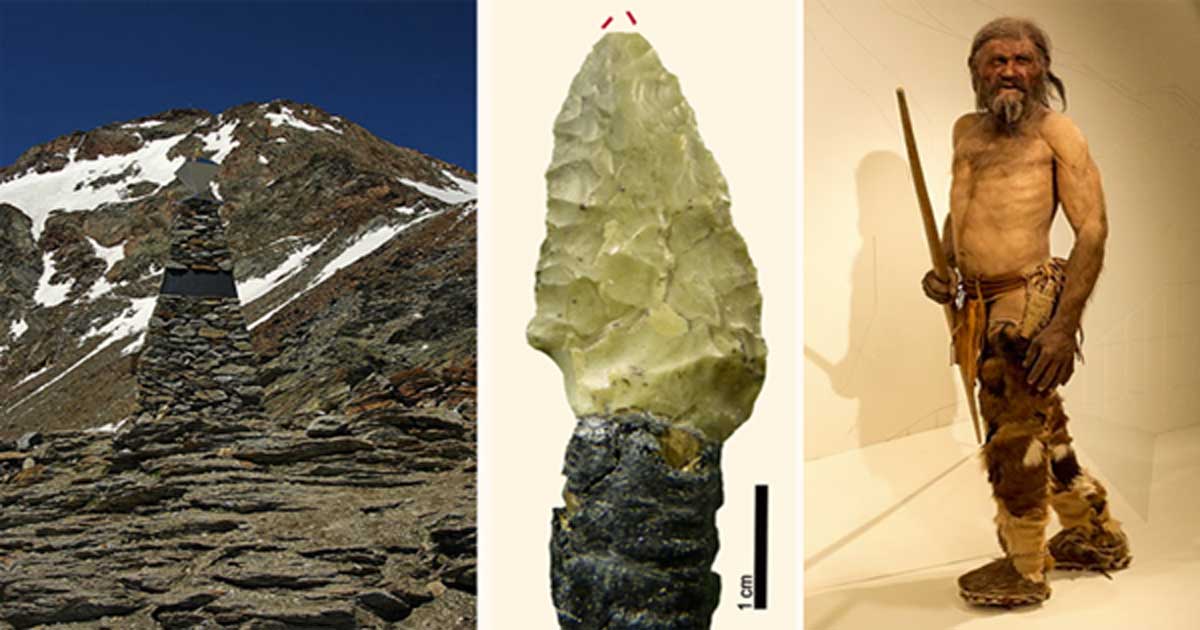
5. Ötzi Has the World’s Oldest Tattoos
Ötzi boasts 61 tattoos, providing evidence of Neolithic tattoo artistry. His tattoos, comprising lines and dots in geometric patterns, might relate to health practices, energy balancing, or hold religious or cultural significance.

6. Ötzi Was Equipped with Various Tools and Weapons
Ötzi’s possessions included stone, wood, and bone tools such as knives, an axe, a hammer, and a flint tool, alongside leather shoes made from deer hide and woven grass cords. His weapons included a bow and several arrows.
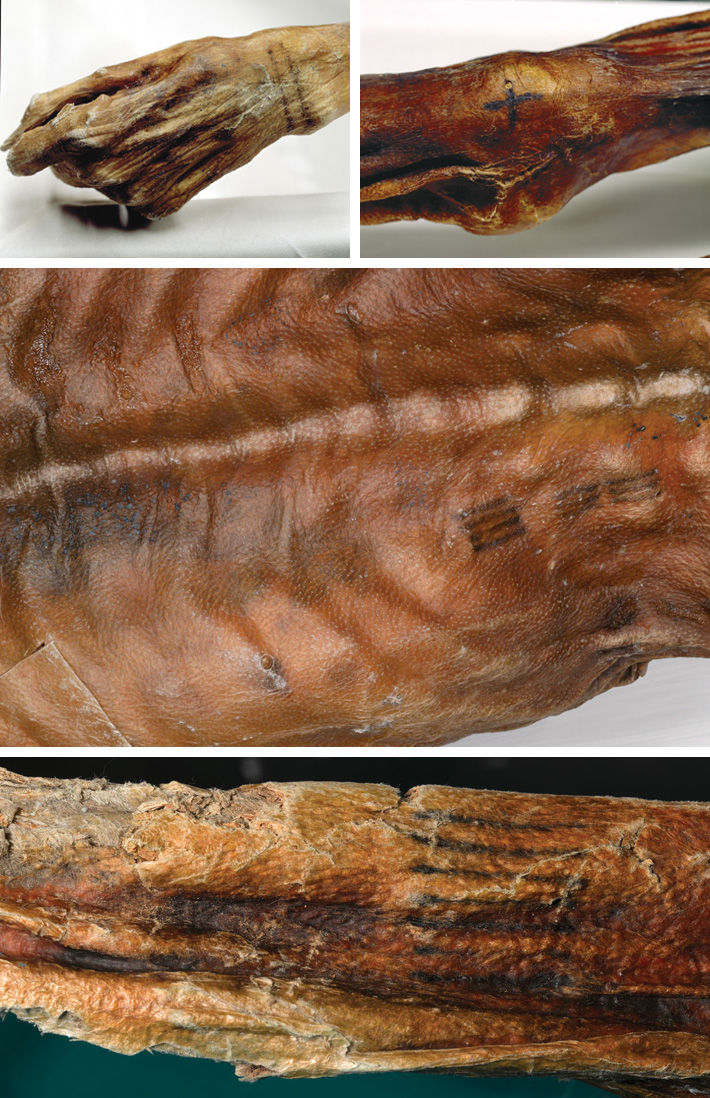
7. Ötzi Sustained Injuries Before His Death
Forensic examinations revealed injuries on Ötzi’s head and body, including a significant wound near his left shoulder, likely the fatal injury. These wounds suggest possible combat or conflict involvement.

8. Ötzi Was Preserved by Ice
For 5,300 years, Ötzi’s body was encased in an ice layer up to 3.2 meters thick, preserving his remains from decomposition and maintaining valuable specimens like bones, skin, and organic tissues.

9. Ötzi’s European Heritage and Ancestry
DNA analysis indicates Ötzi belonged to blood group O and had genetic traits linked to Europe, especially the Alpine region. He also had rare genetic variations related to bone disease and cardiovascular disease.
10. Ötzi Offers Insights into Ancient Life and Culture
Ötzi’s preserved body, clothing, and artifacts provide a glimpse into Copper Age life. Researchers have learned about his diet, attire, tools, and environment, enhancing understanding of the era’s technology, craftsmanship, and social structures.
11. Ötzi’s Discovery Advanced Scientific Research
Extensive studies on Ötzi’s mummified remains have employed techniques like DNA analysis, radiocarbon dating, and isotope analysis. These investigations have unveiled details about his origins, lifestyle, health, and death, driving progress in archaeology, anthropology, medicine, and genetics.
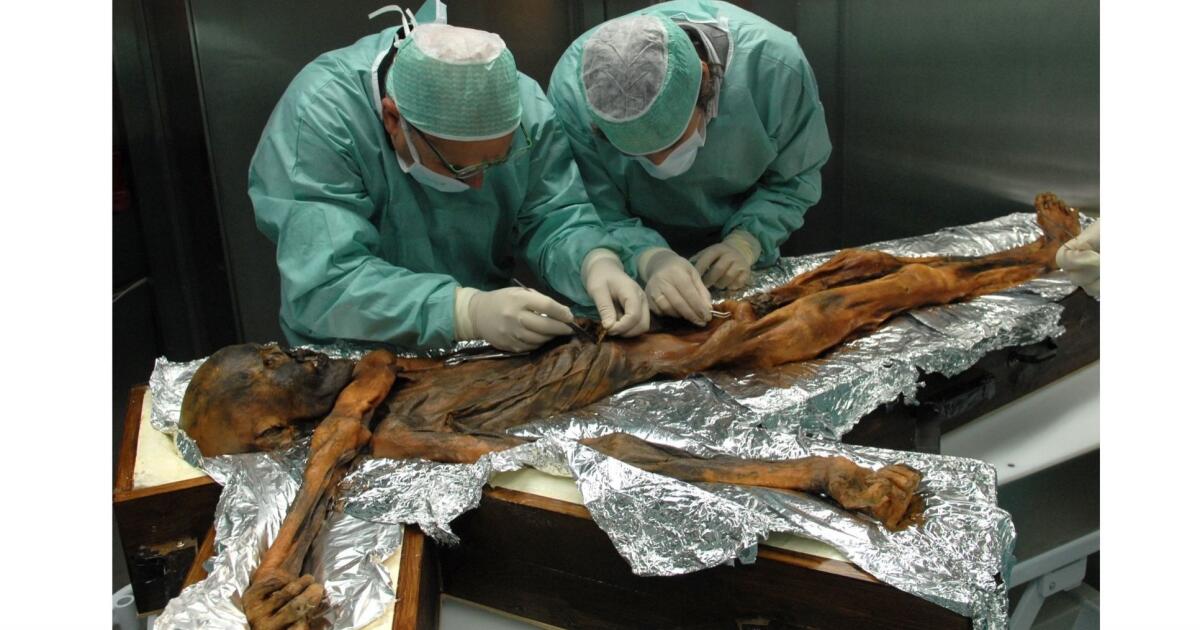
12. Ötzi Attracts Tourists Worldwide
Since 1998, Ötzi has been housed at the South Tyrol Museum of Archaeology in Bolzano, Italy. His mummified body and belongings draw visitors globally, offering a unique opportunity to explore his story and scientific findings.
13. Ötzi’s Legacy Continues to Inspire
Ötzi’s discovery and research have captivated the public and ignited curiosity about our ancient past. His story inspires ongoing exploration into human history and the preservation of archaeological sites.
Conclusion
Ötzi the Iceman is an extraordinary archaeological discovery, shedding light on Copper Age life and culture. His preserved body and artifacts continue to fascinate researchers and the public, with scientific studies furthering our understanding of human history.



